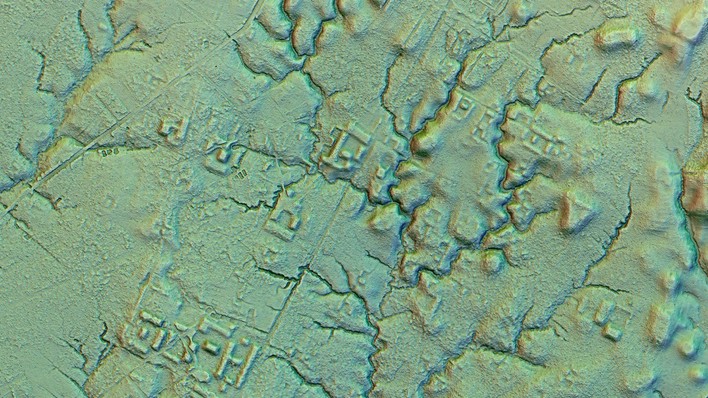In Ecuador, archaeologists have discovered a type of garden city area that dates back to around 2,500 years ago. The area is located on the Rio Upano, which is part of the upper Amazon river system and flows through the eastern foothills of the Andes. Here the international research team came across five larger and ten smaller settlements. They were connected by a complex network of roads surrounded by agricultural land. This is reminiscent of the Mayan culture in Central America, writes the group led by Stéphen Rostain from the Center National de la Recherche Scientifique (CNRS) in Paris in the journal Science.
The findings are based on decades of research in the region, and the area on the Rio Upano was mapped using the radar-like Lidar method, which can make terrain structures covered by dense vegetation visible. In total, Rostain and colleagues evaluated an area measuring 300 square kilometers.
In the area examined there are around 6,000 artificially raised, rectangular platforms, most of which are around ten by 20 meters in size and two to three meters high. There were often buildings on them, but sometimes the elevations also formed squares. In the presumably central town of Sangay, about 35 kilometers from the volcano of the same name, the scientists found a density of 125 platforms per square kilometer.
As early as the 16th century, a traveler reported about garden cities on the Amazon
Sangay and the other towns were connected by a network of highways dug into the ground an average of two to three meters deep. The excavated soil was piled up to form ramparts on the left and right, creating a ravine. The longest of these roads connected the towns of Kilamope and Kunguints and is around 25 kilometers long.
The researchers also found three other types of compounds. While the highways, some of which were over 15 meters wide, cut through the area in a straight line, other connecting routes adapted to the hilly landscape. There were also causeways with ditches on the sides and smaller paths connected to drainage ditches. The area was cultivated for roughly a millennium, up to the period around 300 to 600 AD.
The close connection between residential and agricultural areas is reminiscent of garden cities described by other authors, write the study authors. Rostain’s team is reminiscent of the Spanish conquistador Francisco de Orellana, who set off from the Andes on an expedition along the Amazon in 1541 after conquering the Inca Empire. After it ended, he reported on large cities on the banks of the river and was considered a fraud by his contemporaries. But Orellana did not lie, the researchers emphasize. “We believe it is critical to thoroughly reconsider our preconceptions about the Amazon world,” they write.

